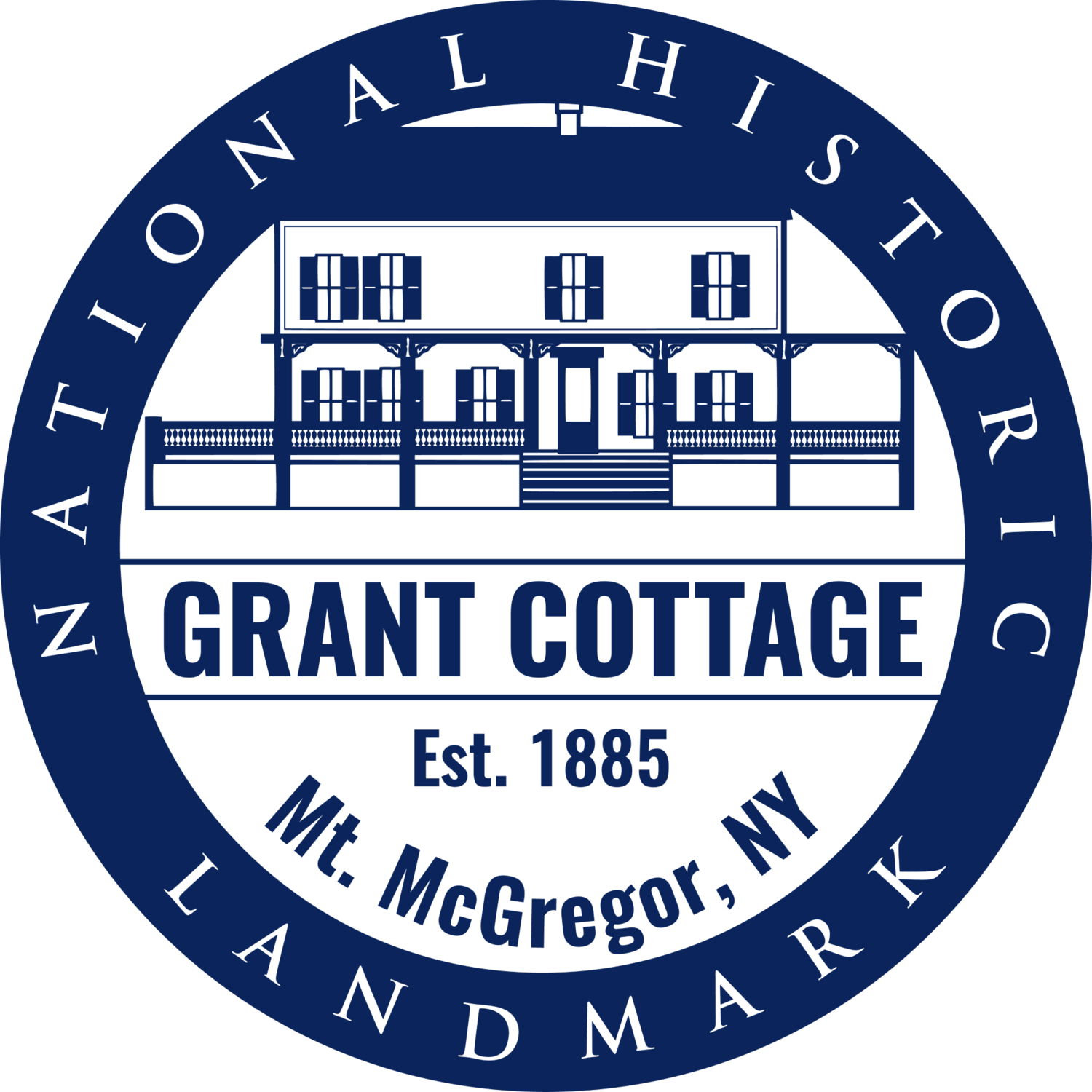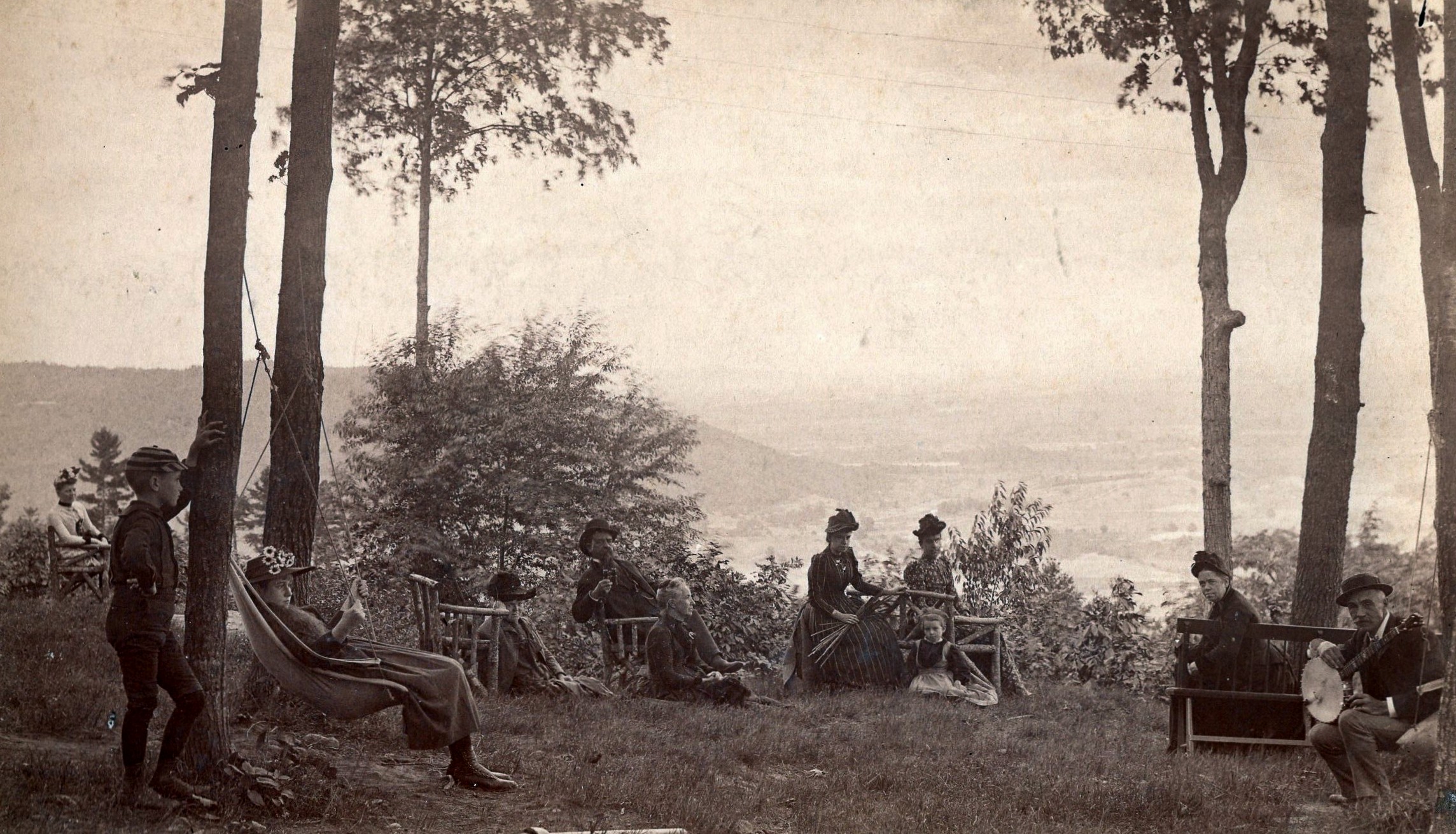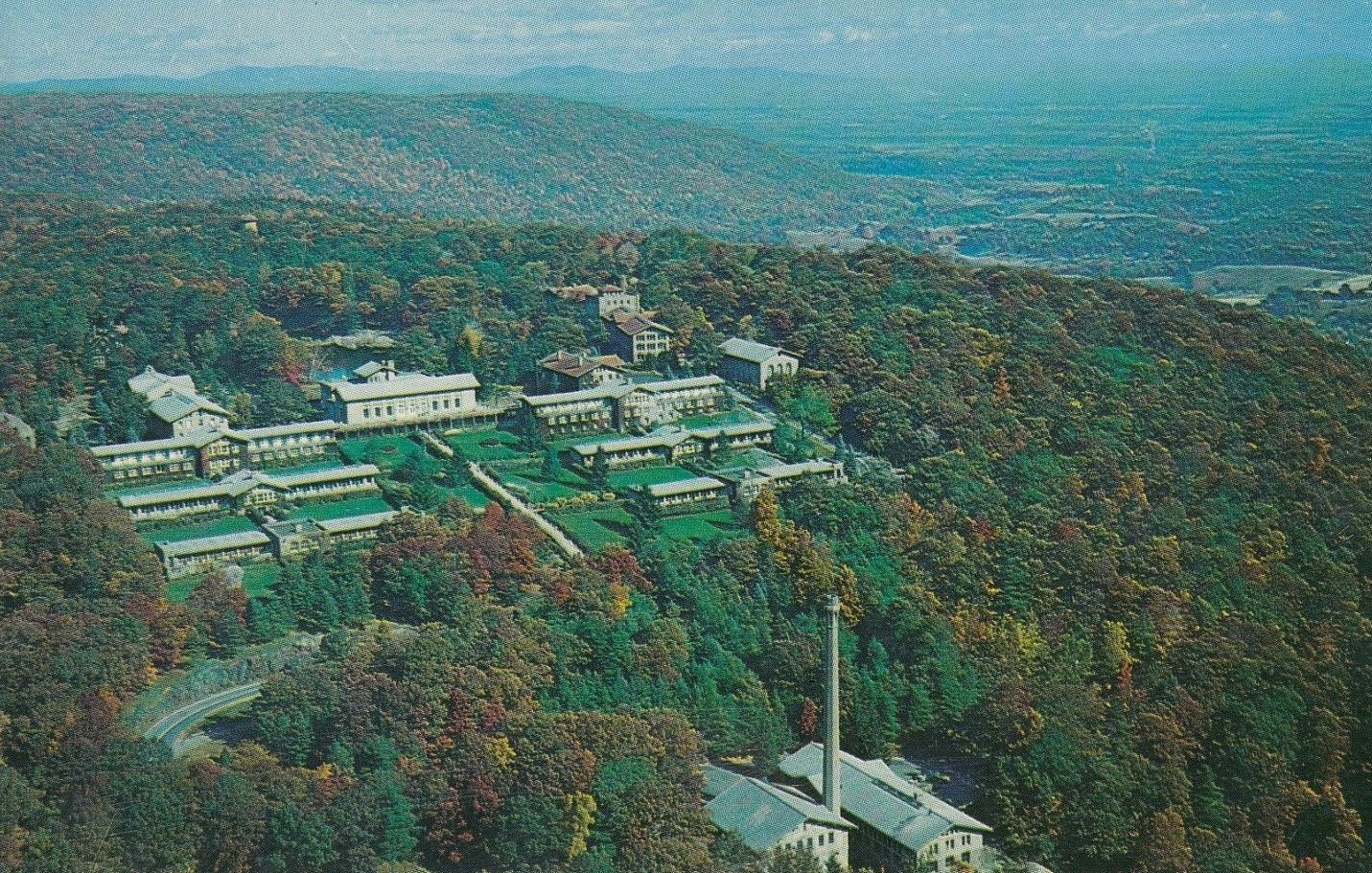Hope & Healing on a Mountaintop
by Ben Kemp, Grant Cottage Operations Manager
Many modern day visitors to Mount McGregor are surprised when ascending the mountain road to see hulking stone buildings as they make their way to the U.S. Grant Cottage Historic Site.. Their first question upon arrival at the visitor center is frequently, “What is that huge facility with the big buildings and high fences?” Although the Historic Site mainly interprets the end of Ulysses S. Grant’s life it also provides historical information about the mountain and its varied uses over the years. This helps the visitor understand the setting and the emotional, psychological and physically transformative power of that setting on the many who have visited and even called Mount McGregor their home over the years.
Mount McGregor began its days in misty lost memory, a peak in the foothills of the Adirondack Mountains that was used simply as a native hunting ground or vantage point for passing colonial armies and early pioneers. That is until a local man in the middle of the 19th century saw its potential beyond a simple hiking destination for local picnickers. With a breathtaking panorama of the Hudson Valley and mountain ranges beyond, Duncan McGregor built the first road up the mountainside and the first modest hotel in the 1870’s, and the peak was named after him. In the 1880’s the resort was expanded and a 100 room “Balmoral” hotel constructed with mountaintop train service installed. The resort encouraged visitors in the nearby Saratoga Springs resort town, to escape the lowlands for the healthier and cooler air of the mountain and its pine forest. Sitting about 900 feet above the valley, Mt. McGregor has steady breezes and remains cooler than the valley on hot summer days. The Balmoral Hotel resort offered fine dining, carriage rides, forest walking paths, swings, overlooks, ponds for fishing and boating, bowling, tennis and musical concerts to entertain visitors. Local newspaper advertisements went so far as to promise relief from hay fever and other ailments claiming the resort to have “no dew, no malaria, no mosquitos” and “certain relief for hay fever.” Regardless of these claims, many flocked to its heights for a chance to relax and recreate. This would just the beginning of visitors coming to the mountain for hope and health.
In the spring of 1885 Ulysses S. Grant, who had been battling throat cancer all winter and struggling to finish his memoirs, needed what his doctors called “a change of scene and air” to escape the heat and “malarious conditions” of New York City. Grant was invited by some individuals involved in the resort to use Mr. McGregor’s original hotel (later called Grant Cottage) as a final refuge during his struggle against throat cancer. Grant’s main doctor, John Douglas, knew the mountain well and remarked, “That is just the place I have been looking for. There is little heat there, it is on the heights, it is free from vapors, and above all, it is among the pines, and the pure air is especially grateful to patients suffering as General Grant is suffering.” Grant would survive an additional six weeks on the mountain, just long enough to finish his memoirs and take care of his family. Though already having lost hope of recovery the dying hero acknowledged the effect of the mountain environment. “The atmosphere makes me to live in comparative comfort while I am being treated or while nature is taking its course with my disease.” Grant’s bodyguard and fellow Civil War veteran Sam Willett echoed the hopes of many stating that the mountain “is just the place for the old hero and it’s just the place for me, too. If I get rid of this rheumatism, I’ll be as spry I was nigh on 20 years ago when I enlisted in the Army.” Shortly before succumbing to his illness Grant made a prediction of the mountain’s future stating, “I feel the air very fine here. This must become a great sanitorium before many years.”
Almost 30 years later would come the sanitorium Grant prophesied, complete with accommodations for over 300 patients in numerous stone buildings on the mountaintop. Built by the Metropolitan Insurance Company (the first such institution built by a corporation for its employees) most of the initial patients were suffering from the long-dreaded tuberculosis (TB), an often fatal lung disease that was for many a slow torturous death. The treatment for TB had been for many years to move patients to a better climate. The climate, coupled with a premium diet and regular exercise appears to have given patients at the Mt. McGregor Sanitorium a reason for hope, and many ended up surviving their illnesses. “It would be difficult to find anywhere a sanatorium site which possesses so much interest, to which fact perhaps is due the serene contentment prevalent here which undoubtedly contributes its share to restoration of health.” (The Saratogian May 22, 1924) Patients were encouraged to soak in the fresh air and experience the mountaintop flora and fauna. They were encouraged to participate in sports, crafts and writing to keep their bodies and minds active, just as General Grant had kept his mind active with his memoirs and trips to the Eastern Overlook. They could worship at the chapel, enjoy entertainment at the theater and partake in one of the annual fairs and celebrations. The Sanitarium even put out its own publication called the “Mt. McGregor Optimist” filled with patient content and fielded a baseball team called the Mt. McGregor Marvels. Patients would sleep outside in the cool air, just as Grant would spend hours on the porch in the cool mountain breezes years earlier. Thousands of hopeful patients traveled to the mountain in search of recovery and through the care they received many would regain their health and their lives.
In the 1880-1890’s there was an unsuccessful movement to make the mountain resort a veterans home for Civil War veterans. This use would finally be realized some 50 years later. In the 1940’s and 50’s the battle worn veterans of World War II took up residence in the facility which was repurposed as a New York State Veterans Rest Camp. Adjusting back to civilian life as many veterans will attest, is not always an easy thing. Shell-shock, battle fatigue, soldier’s heart, PTSD carried many names over the years, but without a solid medical cure, rest and comradeship seemed to offer some hope. What better place than a secluded mountaintop to offer the peacefulness and safety that was sorely lacking on the front lines of war. General Grant, having witnessed the horrors of war and carrying the heavy burden of responsibility for so many deaths, like later veterans, may have found some rest and solace in the peacefulness of the mountain as well.
In the 1960’s and 1970’s special needs children would be brought to the mountain as it was repurposed again, this time into an annex to the Rome State School for the Retarded. Mental health care was improving but not what it is today. The facility offered at least a peaceful location for many who knew little of peace. Local seniors would spend time with the children there and classes of local schoolchildren and local societies would offer entertainment in the form of concerts and plays.
Although not popular at first with the local community, the state repurposed the facility in the late 1970’s as a minimum/medium security State Correctional Facility. Mt. McGregor Correctional Facility housed as many as 500 prisoners during its tenure on the mountain. The prison offered some of the best learning and rehabilitation programs in the system. The programs coupled with the beautiful location offered the prisoners some hope for the future. One prisoner commented after his release, “It was the most different jail in the entire system, It was the only facility I’ve been in where they actually trained people to come home — where they gave you life skills. It was a magical place, I saw some of the hardest criminals come in there, start taking the programs, and their whole lives would change.” (Daily Gazette article 8/15/14)
It was health problems, TB to be exact, that would bring a young Japanese immigrant girl to the mountain in the early 1900’s. Eventually overcoming the disease while on the mountain, Suye Narita Gambino would spend more time on the mountain than anyone. For the next 70 years of her life she served as a faithful caretaker of Grant Cottage never tiring of mountain’s beauty, its animals or its many visitors. She remarked, "I have always said that TB or 'my bugs' were a blessing God gave me. I have always loved it on the mountain -- every stick, stone, animal, bird, and every person."
The Mt. McGregor area continues to attract visitors looking for health and recreation. Nearby Moreau Lake State Park offers miles of recreational trails, boating and hiking in some of the same woods and waters sought out by many for health and hope for the last 150 years. There are many roads people travel seeking health and hope and for many over the years, including General Grant, the road up Mount McGregor was one such road.
“There is a nook, where blows the highland air
For healing; and they sadly led him there
Awhile to rest, for more resistless foe
He ne’er has met- ‘tis Death is calling low.
But air and sympathy can ne’er control
The God within us; the too restless soul
Must rest at last, and resting be at peace
With God and man; the hero has release.”
-from Mt. McGregor by Allen Cross 1885










